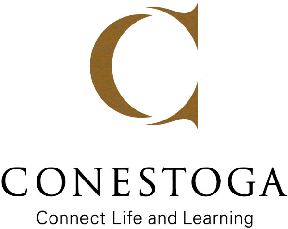
Scanning Guidelines for Business Records
- Approver:
- Academic Coordinating Committee
- Policy Owner:
- Associate Vice President, Risk Management
- Policy Lead(s):
- Manager, Campus Safety
- Defining policy:
- Effective date:
- 2022-05-25
- Date of last approval:
- 2022-05-25
- Status:
- Approved
Purpose
ĚÇĐÄvlogľ«Ć· Institute of Technology and Advanced Learning (Conestoga) is committed to
following best practices when digitizing paper records and creating digital copies to ensure
continuity of business practices dependent on the records, support better disaster recovery and
back-up options, reduce physical storage space, improve business workflow, and increase
organizational productivity.
Scope
These guidelines:
- provides guidance for creating digital copies of business records by converting them from the original paper form (scanning), and summarizes relevant best practices and industry-accepted standards
- establish standards for digitization to ensure the trustworthiness and reliability of created digital copies and specify methods to assist in creating digitized records fit for long-term retention
- suggest best practices for maintaining digitized copies after their creation and draw attention to disposal of the non-digital source records
These guidelines are not applicable to digitization of archival material and objects other than
regular office records. Individuals are expected to follow these in-house scanning standards
that staff to ensure business records, of value to themselves and their colleagues, are properly
digitized and accessible.
Definitions
ĚÇĐÄvlogľ«Ć· maintains a glossary of terms specific to the institution. The ones in use for this document are defined below.
- Archives
- The designated archival repository for Conestoga under the direction of Conestoga’s Library Services.
- Conestoga Users
- Individuals who access and or use Conestoga’s data while performing their duties on behalf of the College. Users include, but are not limited to, Conestoga employees (full time, part time, definite term, casual, etc.), contractors, consultants, and volunteers.
- Digitization
- The process of converting hard-copy records into a digital format (also known as scanning).
- Disposition
- Destruction and or transfer to an archival facility.
- Record (as defined by FIPPA)
- “record” means any record of information however recorded, whether in printed form, on film, by electronic means or otherwise, and includes,
- (a) correspondence, a memorandum, a book, a plan, a map, a drawing, a diagram, a pictorial or graphic work, a photograph, a film, a microfilm, a sound recording, a videotape, a machine-readable record, any other documentary material, regardless of physical form or characteristics, and any copy thereof, and
- (b) subject to the regulations, any record that is capable of being produced from a machine-readable record under the control of an institution by means of computer hardware and software or any other information storage equipment and technical expertise normally used by the institution; (“document”)
- Definition includes records that are not complete such working drafts, voicemail, etc
- Retention Schedule
- Approved guidance defining how long each type of record is to be kept and how the record is disposed of at the end of its lifecycle.
Guidelines
Technical specifications
- As a rule, a business record should be scanned as a searchable PDF at 300 dpi.
- This table provides the average standards for digitization.
| Specification | Text-only records (clear, easily legible) | Handwritten notes; mixed records; records of poor quality | Images, photographs |
| Output file formats | Searchable PDF | JPG/JPEG | |
| Resolution | 300 dpi | 300-600 dpi | Up to 100 dpi |
| Scanning ratio | 100% | 100% | 100% |
| Colour management | Black and white | Greyscale or colour | Colour |
Naming
- Records should be named consistently. Decide on an appropriate file naming convention and use it for all records
Output destination
- Decide on the location, where scanned images will be saved (storage). It should be online (cloud) storage
- Decide on the way the files are organized in that location – on the folder structure of the network drive, or the configuration of the SharePoint library
Not recommended
- Never use CD or DVD drives as a permanent storage for scanned images! Data recorded on CDs and DVDs deteriorates very quickly (an average shelf life of a CD is about 10 years)
- Do not use external hard drives or USB flash drives due to the risk of loss, theft, etc.
Scanning Process
- Follow this process when scanning your records on an inhouse photocopier:
- Remove staples, clips, etc.
- Remove duplicate physical copies
- Sticky notes are a part of a record – if they exist please:
- Remove the sticky notes and attach them to a blank sheet immediately following the original sheet
- Prepare to scan to pdf
- Remove any pages that can hinder the operation of the scanning equipment, and scan them separately on the glass flatbed on a local printer that has scanning capabilities
- Count the number of pages (including blank sheets), and note it
- Always scan double-sided
Post-processing
- We recommend using Adobe Acrobat Pro for post-processing of the scanned PDFs.
- After you have scanned the records:
- Make sure the number of pages in the scanned PDF(s) is the same as the previously recorded number of pages being scanned.
- Make sure the text within the PDFs is searchable. If not, use "Recognize text" feature of the software
- Split bulk PDFs into discrete records
- Save each record as a separate file
- Remove blank pages from PDFs to reduce the file size
- Properly name files according to the naming convention, and save them into the agreed upon output location
Quality Control
- The quality of the output files must be evaluated to verify that the digitized version accurately represents the content of the original record
- All scans must be legible to the smallest font on the record, regardless of colour and markings
Disposition of paper originals
- For further guidance on destruction of originals, review the Retention Procedure. Any records scheduled for the archives must not be destroyed
- Records not scheduled for the archives may be securely destroyed depending on the sensitivity of the information contained within
Relevant Legislation and Related Documents
Relevant legislation
Related documents
Revision Log
‸ľ˛ąłŮ±đ | ‸ľ±đłŮ˛ąľ±±ô˛ő |
| ​2022-05-04 | ​Academic Forum |
| ​2022-05-25 | ​Academic Coordinating Committee |
